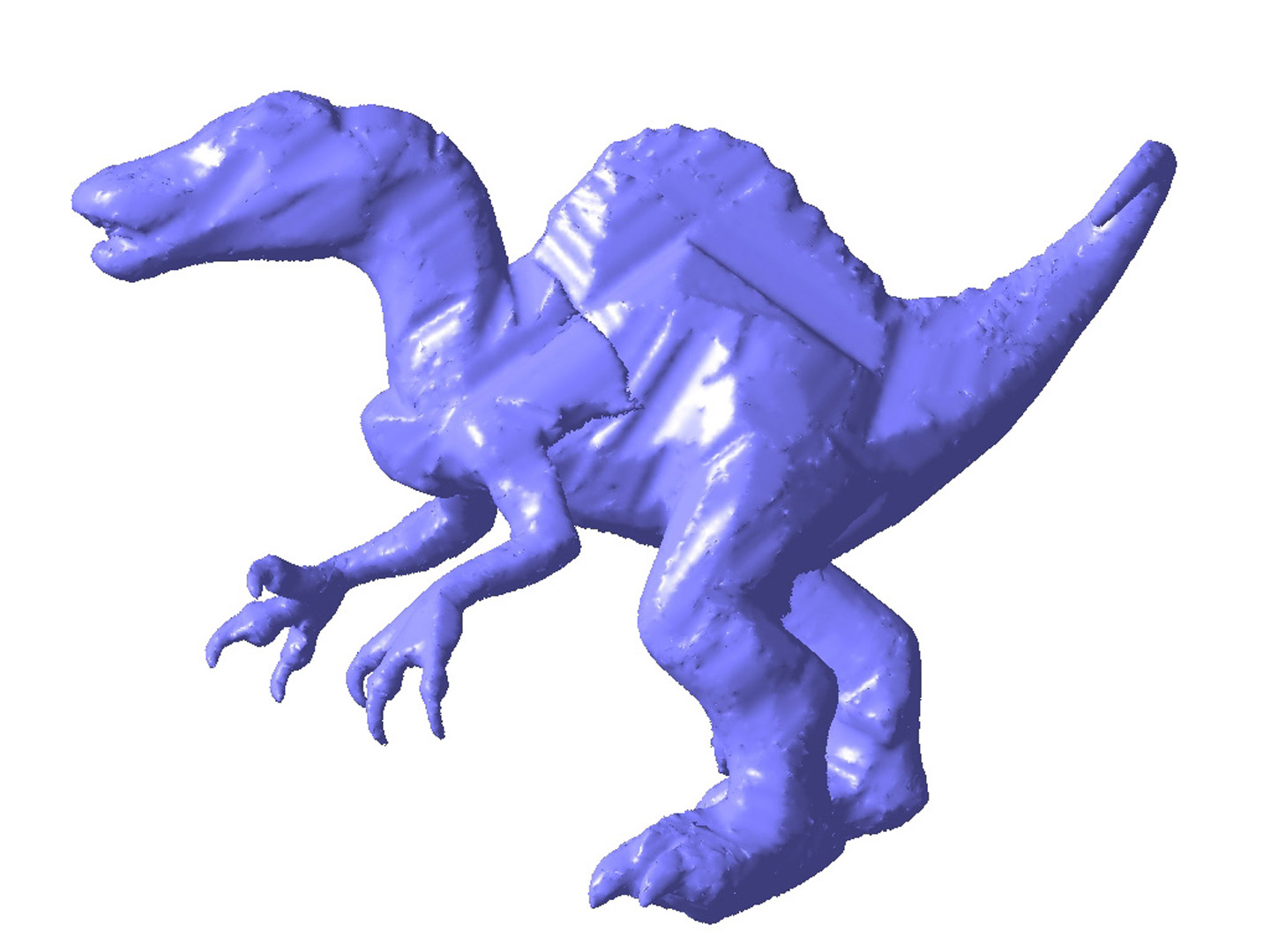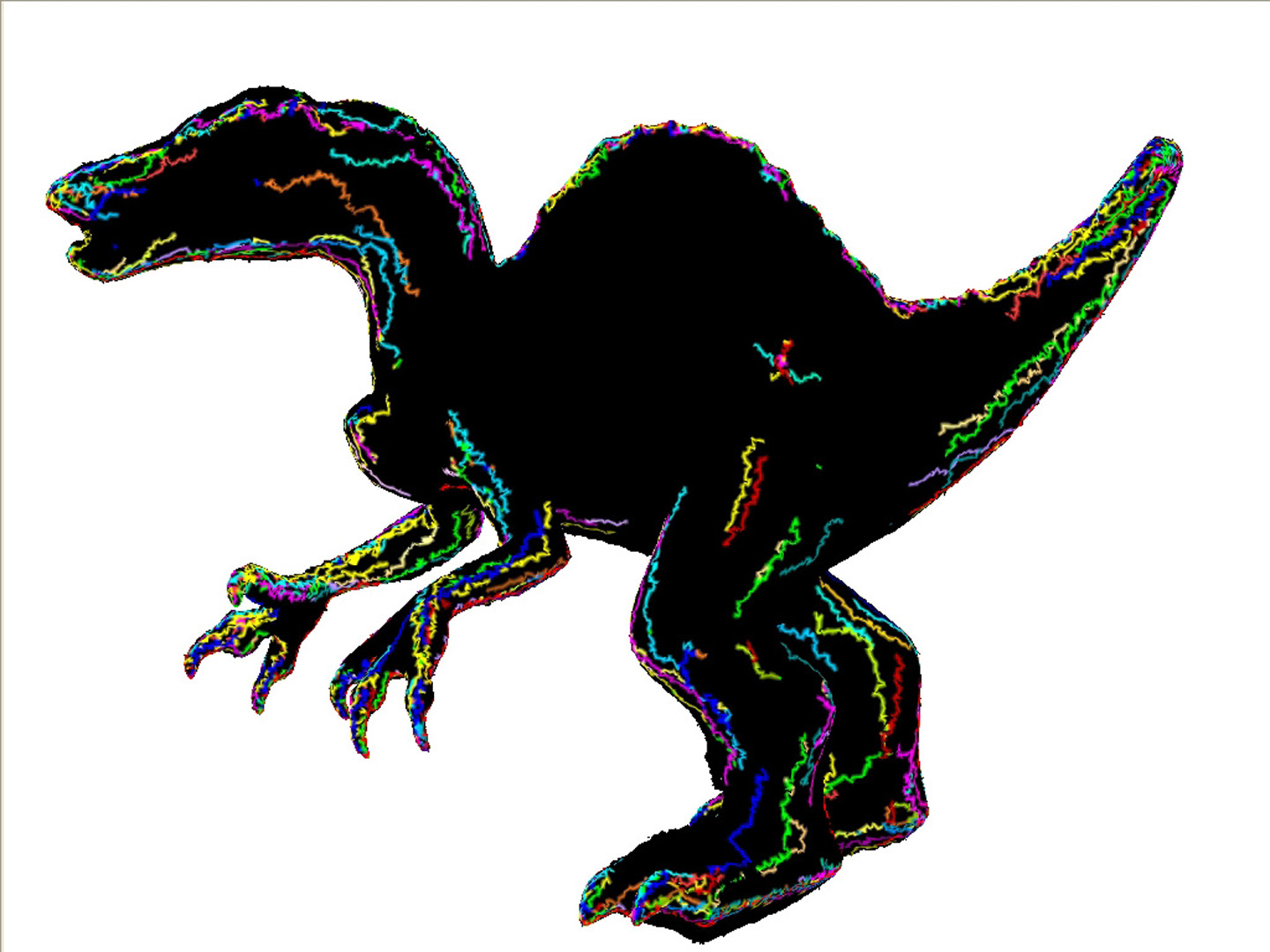“Carved Visual Hulls for High-Accuracy Image-Based Modeling” by Furukawa and Ponce
Conference:
Type(s):
Title:
- Carved Visual Hulls for High-Accuracy Image-Based Modeling
Session/Category Title: Image-Based Rendering
Presenter(s)/Author(s):
Abstract:
The relative accuracy of high-end laser range scanners can be as high as 1/10,000, allowing the construction of high-accuracy solid models of complex shapes from registered depth maps [Levoy et al. 2000]. Comparable accuracy levels can be achieved using “ordinary” cameras and sophisticated photogrammetric methods, but these typically output a relatively sparse set of points and re- quire markers [Uffenkamp 1993]. Computer vision approaches to image-based modeling from calibrated photographs construct solid object models and do not need markers [Baumgart 1974; Kutulakos and Seitz 2000], but their relative accuracy is typically be- low 1/200. [Hernandez and Schmitt 2004] propose to use the visual hull [Baumgart 1974] to initialize the deformation of a surface mesh under the influence of rim- and photo-consistency constraints expressed by gradient flow forces (see [Keriven 2002] for a related approach). Although this method yields excellent results, its re-liance on iterative refinement makes it susceptible to local minima.
References:
Baumgart, B. 1974. Geometric modeling for computer vision. PhD thesis, Stanford University. Google ScholarDigital Library
Boykov, Y., and Kolmogorov, V. 2003. Computing geodesics and minimal surfaces via graph cuts. In ICCV, 26–33. Google ScholarDigital Library
Hernandez, C., and Schmitt, F. 2004, Silhouette and stereo fusion for 3D object modeling. CVIU 96, 3, 367–392.
Keriven, R. 2002. A variational framework to shape from contours. Tech. Rep. 2002–221, ENPC.
Kutulakos, K., and Seitz, S. 2000. A theory of shape by space carving. IJCV 38, 3, 199–218.
Lazebnik, S. 2002. Projective visual hulls. Tech. Rep. MS Thesis, UIUC.Google Scholar
Levoy, M., Pulli, K., Curless, B., Rusinkiewicz, S., Koller, D., Pereira, L., Ginzton, M., Anderson, S., Davis, J., Ginsberg, J., Shade, J., and Fulk, D. 2000. The digital michelangelo project: 3D scanning of large statues. In SIGGRAPH, 131–144.
Uffenkamp, V. 1993. State of the art of high precision industrial photogrammetry. In Third International Workshop on Accelerator Alignment.
Acknowledgements:
This research was partially supported by the National Science Foundation under grant IIS-0312438.








